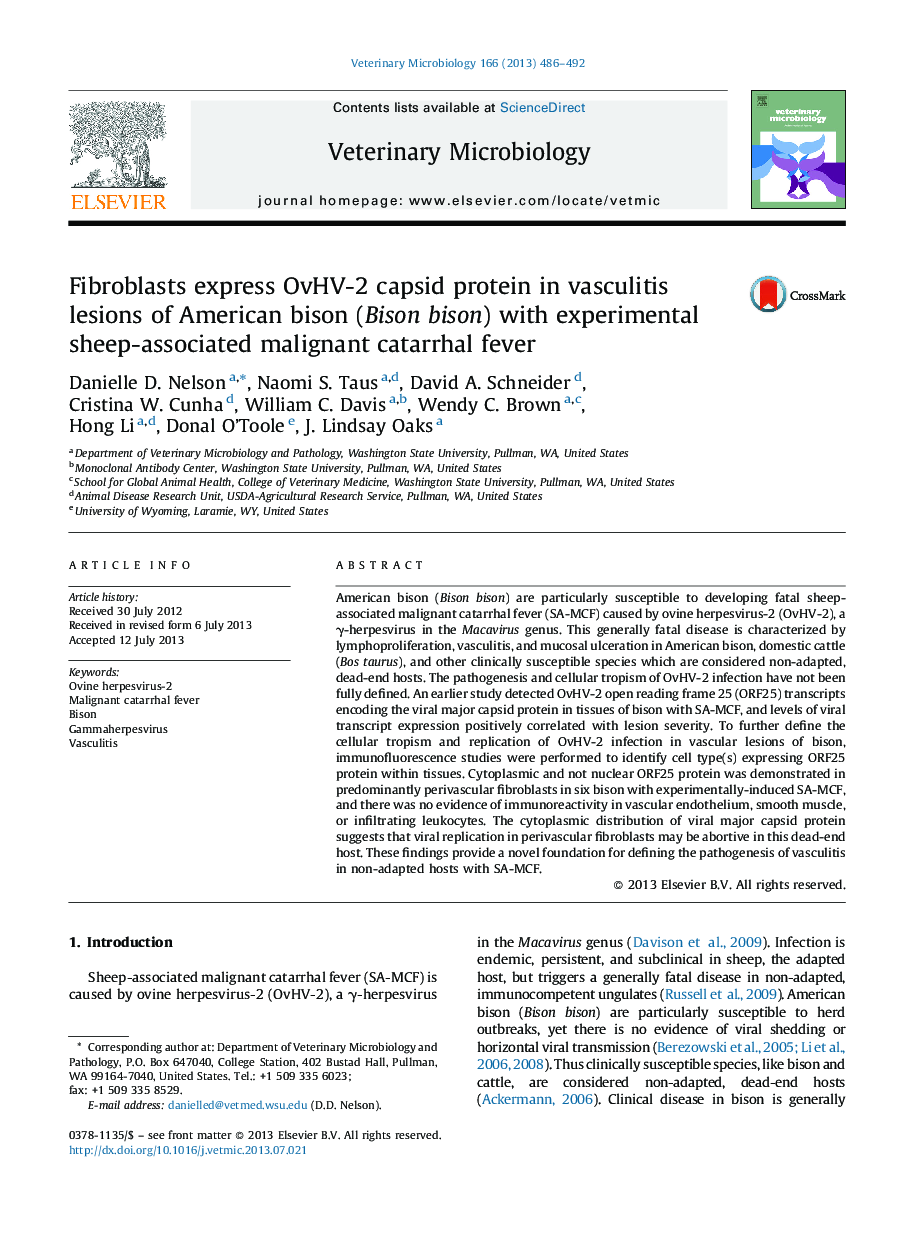| Article ID | Journal | Published Year | Pages | File Type |
|---|---|---|---|---|
| 5801170 | Veterinary Microbiology | 2013 | 7 Pages |
American bison (Bison bison) are particularly susceptible to developing fatal sheep-associated malignant catarrhal fever (SA-MCF) caused by ovine herpesvirus-2 (OvHV-2), a γ-herpesvirus in the Macavirus genus. This generally fatal disease is characterized by lymphoproliferation, vasculitis, and mucosal ulceration in American bison, domestic cattle (Bos taurus), and other clinically susceptible species which are considered non-adapted, dead-end hosts. The pathogenesis and cellular tropism of OvHV-2 infection have not been fully defined. An earlier study detected OvHV-2 open reading frame 25 (ORF25) transcripts encoding the viral major capsid protein in tissues of bison with SA-MCF, and levels of viral transcript expression positively correlated with lesion severity. To further define the cellular tropism and replication of OvHV-2 infection in vascular lesions of bison, immunofluorescence studies were performed to identify cell type(s) expressing ORF25 protein within tissues. Cytoplasmic and not nuclear ORF25 protein was demonstrated in predominantly perivascular fibroblasts in six bison with experimentally-induced SA-MCF, and there was no evidence of immunoreactivity in vascular endothelium, smooth muscle, or infiltrating leukocytes. The cytoplasmic distribution of viral major capsid protein suggests that viral replication in perivascular fibroblasts may be abortive in this dead-end host. These findings provide a novel foundation for defining the pathogenesis of vasculitis in non-adapted hosts with SA-MCF.
